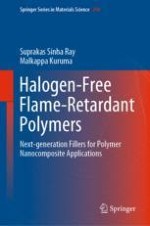This book presents an overview of recent academic and industrial research efforts concerning halogen-free flame-retardant (FR) polymers and their nanocomposites. It summarizes the synthesis methods for various types of halogen-free FR polymers and their nanocomposites, and critically reviews their flame-retardant behavior, toxic-gas evolution during combustion, and inhibition methods.
In turn, the book discusses the importance of metal oxide nanoparticles, nanoclay, and graphene in flame inhibition and addresses the FR properties of various FR compounds containing polymers, their FR mechanisms, and fire toxicant releasing and inhibition methods in detail. It systematically covers the synergetic effects between different FR compounds, and explains the significance of thermal stability and melt dripping for polymers’ FR properties.
The fundamental concepts described here are essential to understanding the FR behaviors of various polymers and their nanocomposites, and to developing efficient, environmentally friendly FR polymers and nanocomposites for a wide range of applications. This book is ideally suited for researchers in the fields of polymer science and engineering, and for graduate students in chemistry and materials science.
